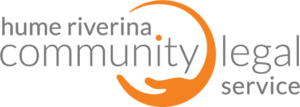Strong relationships key to success for removing invisible legal hurdles for young people
A three-year pilot project to increase access to free legal assistance for young people experiencing, or at-risk of, family violence has resulted in many legal problems being fixed for those who would not normally get help from a lawyer.
In a Border first, the innovative Invisible Hurdles project saw Hume Riverina Community Legal Service embed a free lawyer into three organisations: Albury Wodonga Aboriginal Health Service (AWAHS), Wodonga Flexible Learning Centre and North East Support and Action for Youth Inc. (NESAY). Throughout the project, over 100 people were assisted with legal problems who would not have otherwise accessed a lawyer.
In launching the Invisible Hurdles Report, Overcoming the Invisible Hurdles to Justice for Young People, on Thursday 8 November, HRCLS Principal Lawyer Sarah Rodgers said of the many reasons behind the project’s success, the significant commitment by the partners was crucial to the outcomes.
“Co-location, relationship-building and trust, along with our availability and ability to respond quickly to legal problems, were central to us more effectively reaching the young people we want to help,” Ms Rodgers said. “As an independent community legal centre, we have the flexibility to help people for free, and without the strict guidelines that apply to accessing legal aid.”
Ms Rodgers said the service was proud to be part of the Integrated Justice Practice, combining health, education and legal services, which had proven to be very effective in getting legal issues because of the early intervention.
“This model is needed to help prevent legal problems from escalating and gives the best chance of a positive outcome,” she said. “Part of our strategic focus is ensuring young people experiencing family violence have the legal support they need to deal with the issues.”
North East Support and Action for Youth Inc. CEO Leah Waring said a positive ripple effect had been created relationships enhanced, while providing an opportunity for NESAY employees to gain new skills.
“Our staff now have the ability to identify a potential legal problem, and have the confidence to refer people they’re seeing who need legal advice to the Invisible Hurdles lawyer,” she said. “Our young people would be highly unlikely to make an appointment for help from the lawyer without encouragement from a support work they trust. And our young people are staggered they can see a lawyer for free, so without the Invisible Hurdles project, the opportunities for them to get legal help basically don’t exist.”
Dr Liz Curran, Associate Professor of Law at the ANU College of Law, led the research and evaluation of the project with Pamela Taylor-Barnett. Dr Curran said the research showed how allowing time for natural progression and learning was pivotal.
“The most important thing we learnt was that young people, the vulnerable and even professional services providers don’t trust lawyers and the legal system and that trust takes time to build,” Dr Curran said. “In the final year of the project, when those relationships were strong and working smoothly, we saw a massive increase in referrals and consultations – 288 in the final 12 months of the project.”
The first two years of the Invisible Hurdles project was made possible through funding received from the Victorian Legal Services Board Grant Program. Stage 2 funding for a further two years was announced on 29 October 2018.
Invisible Hurdles Report – Overcoming the Invisible Hurdles to Justice for Young People is online.

